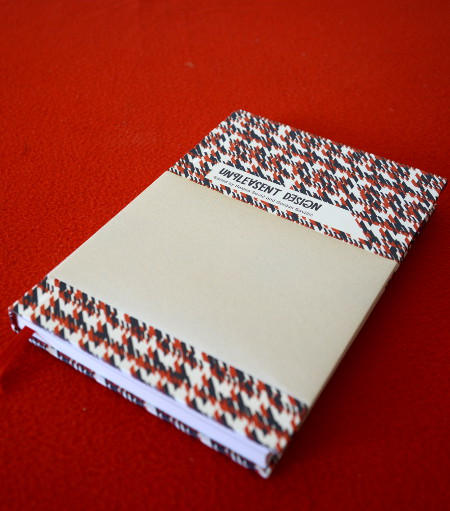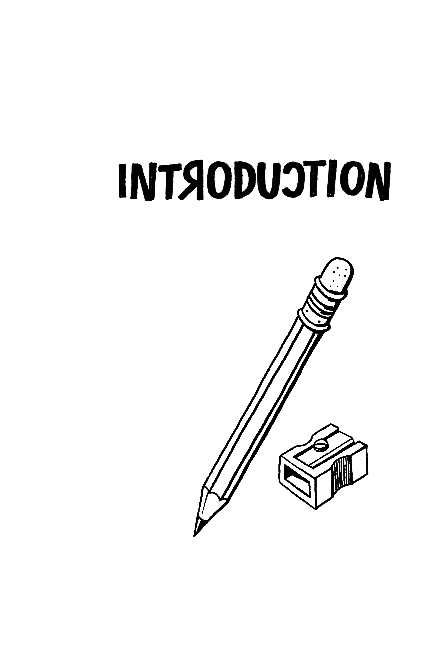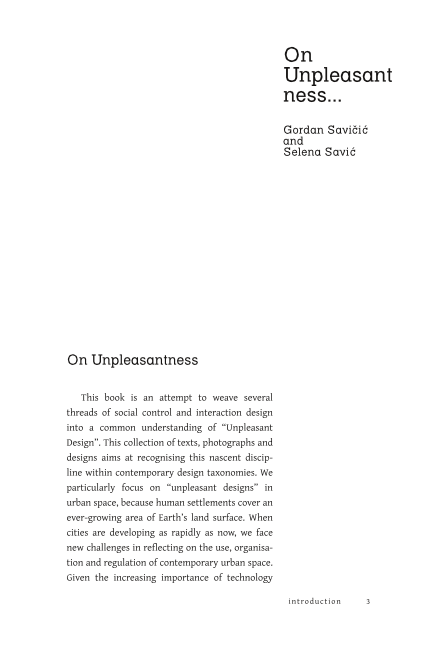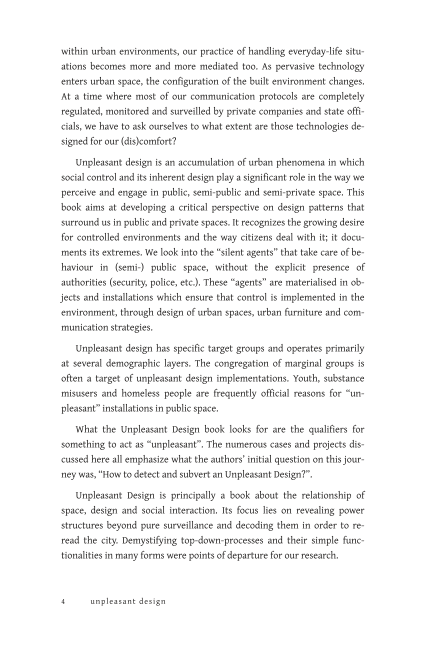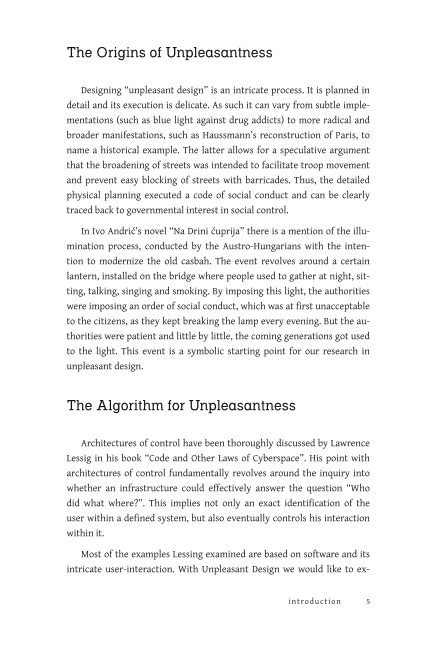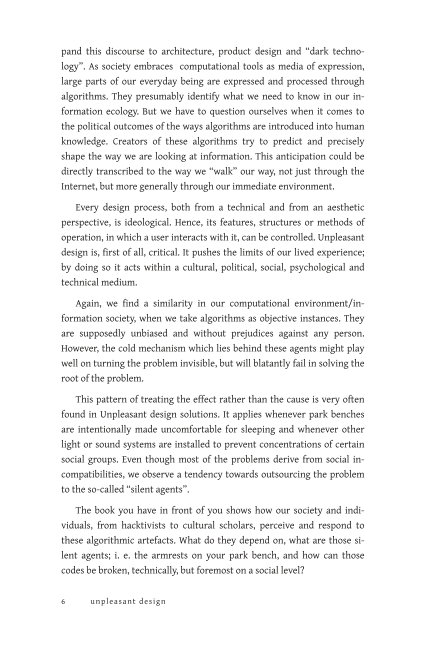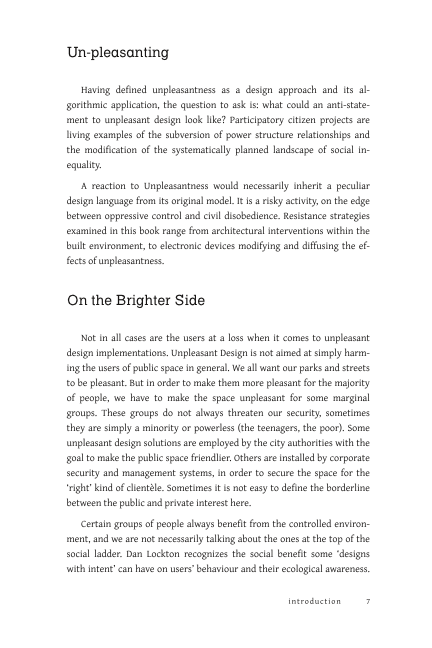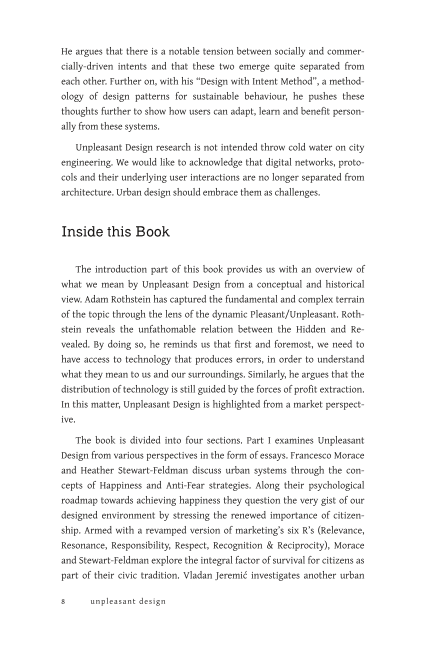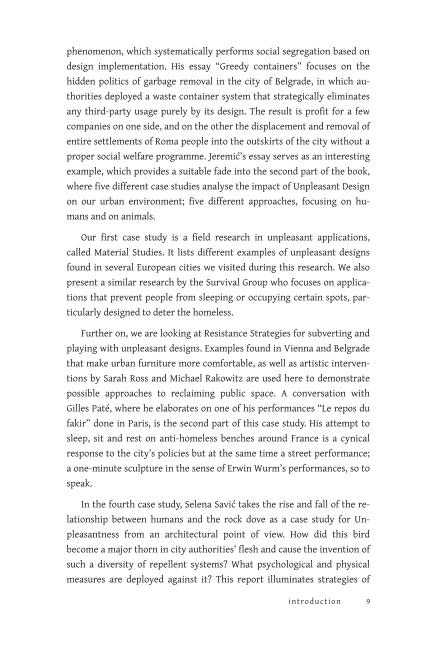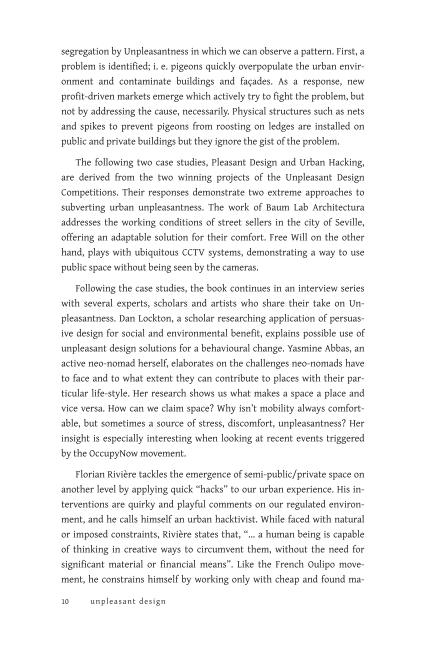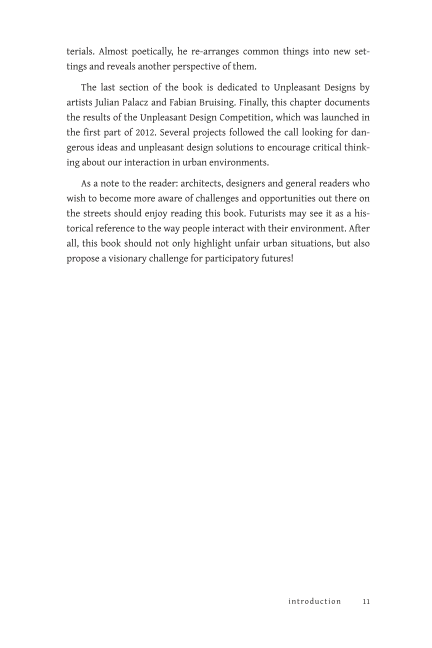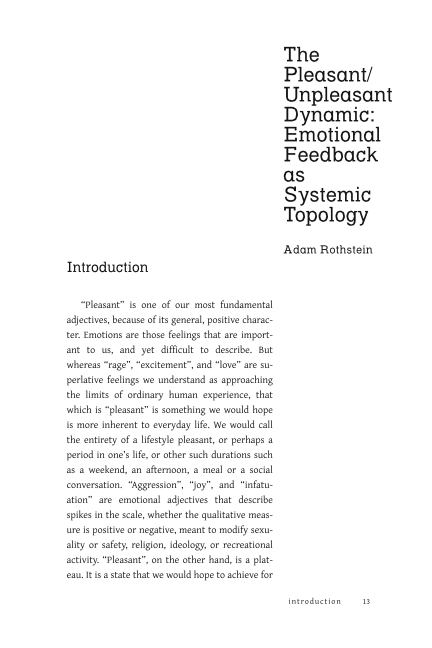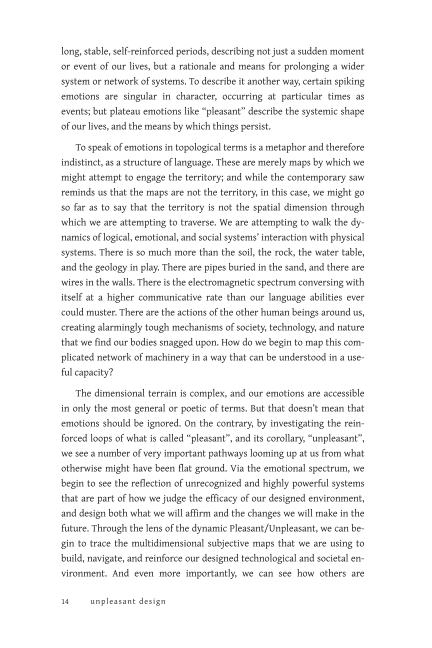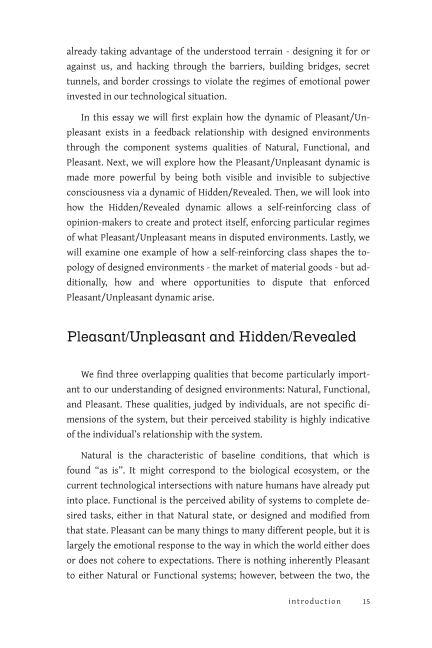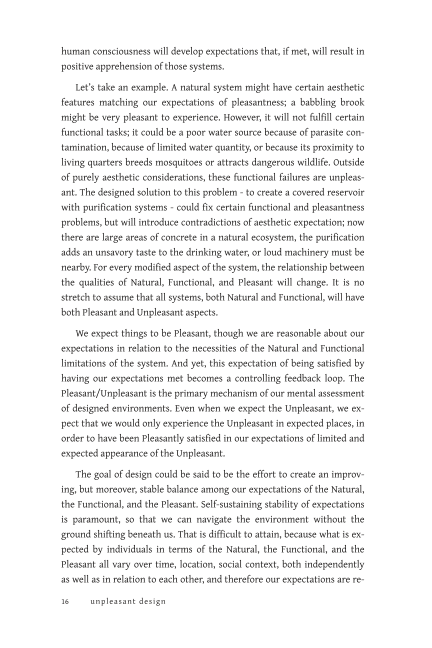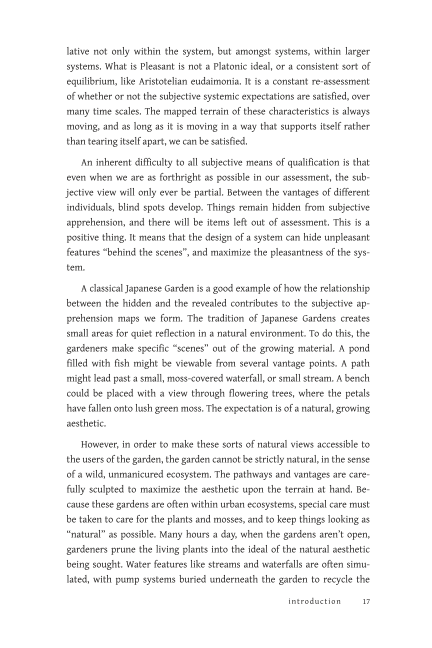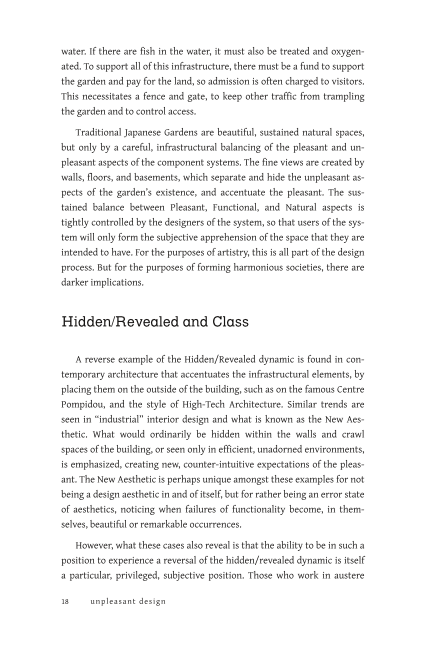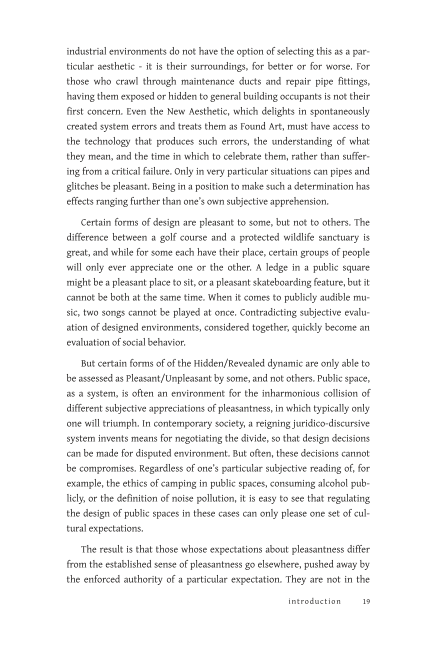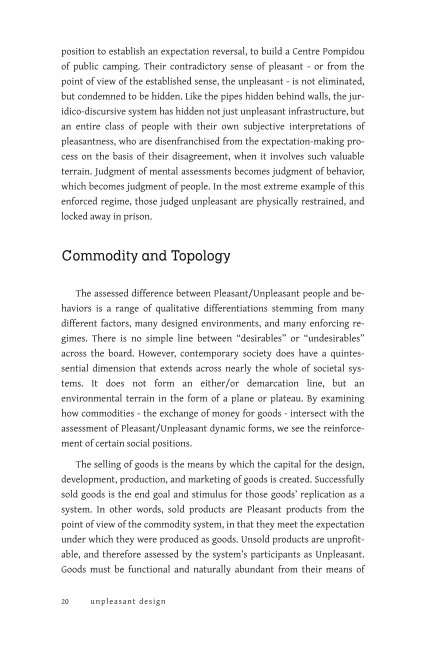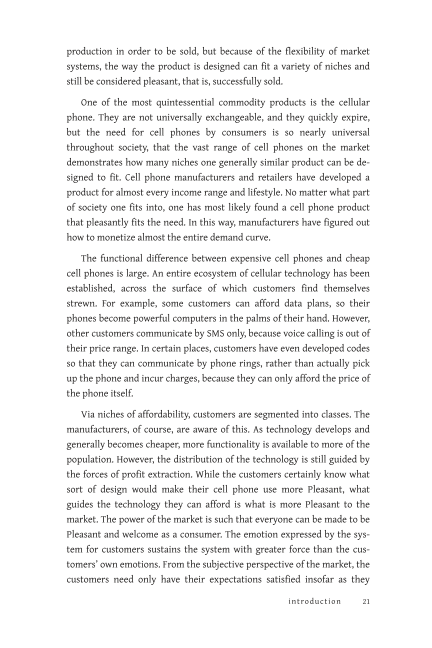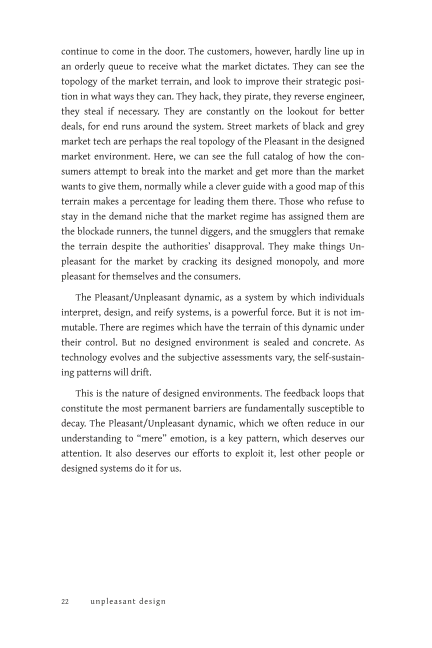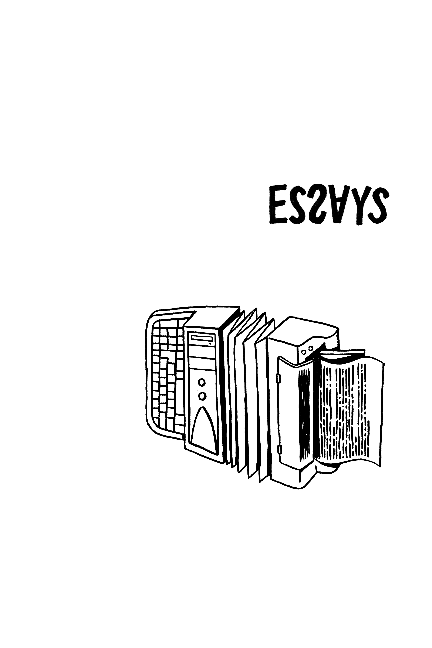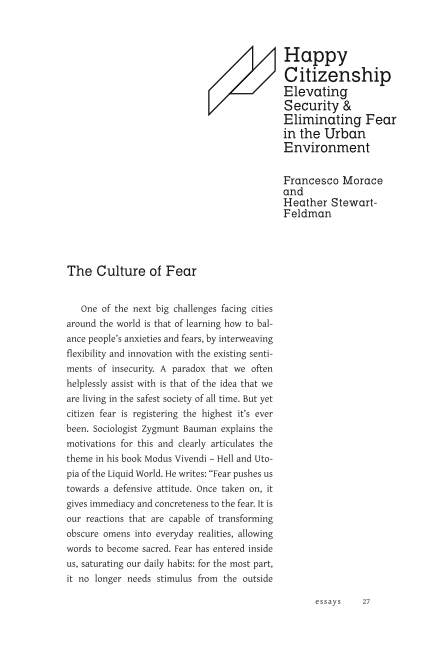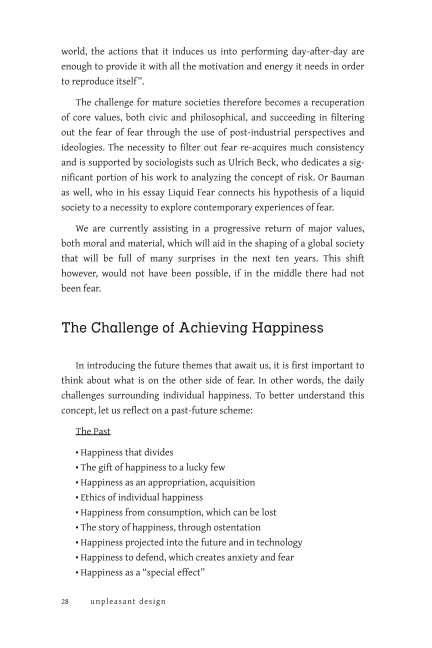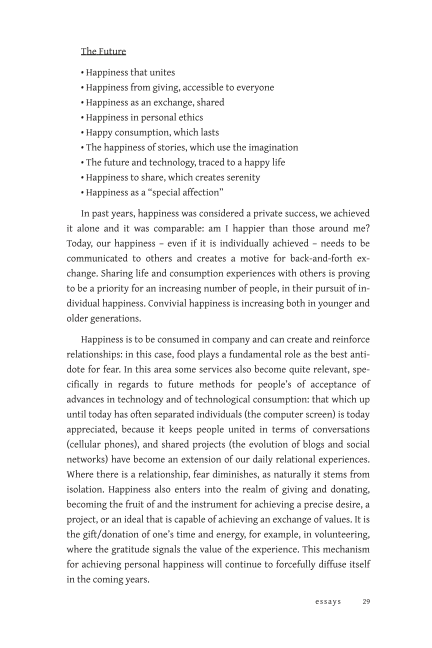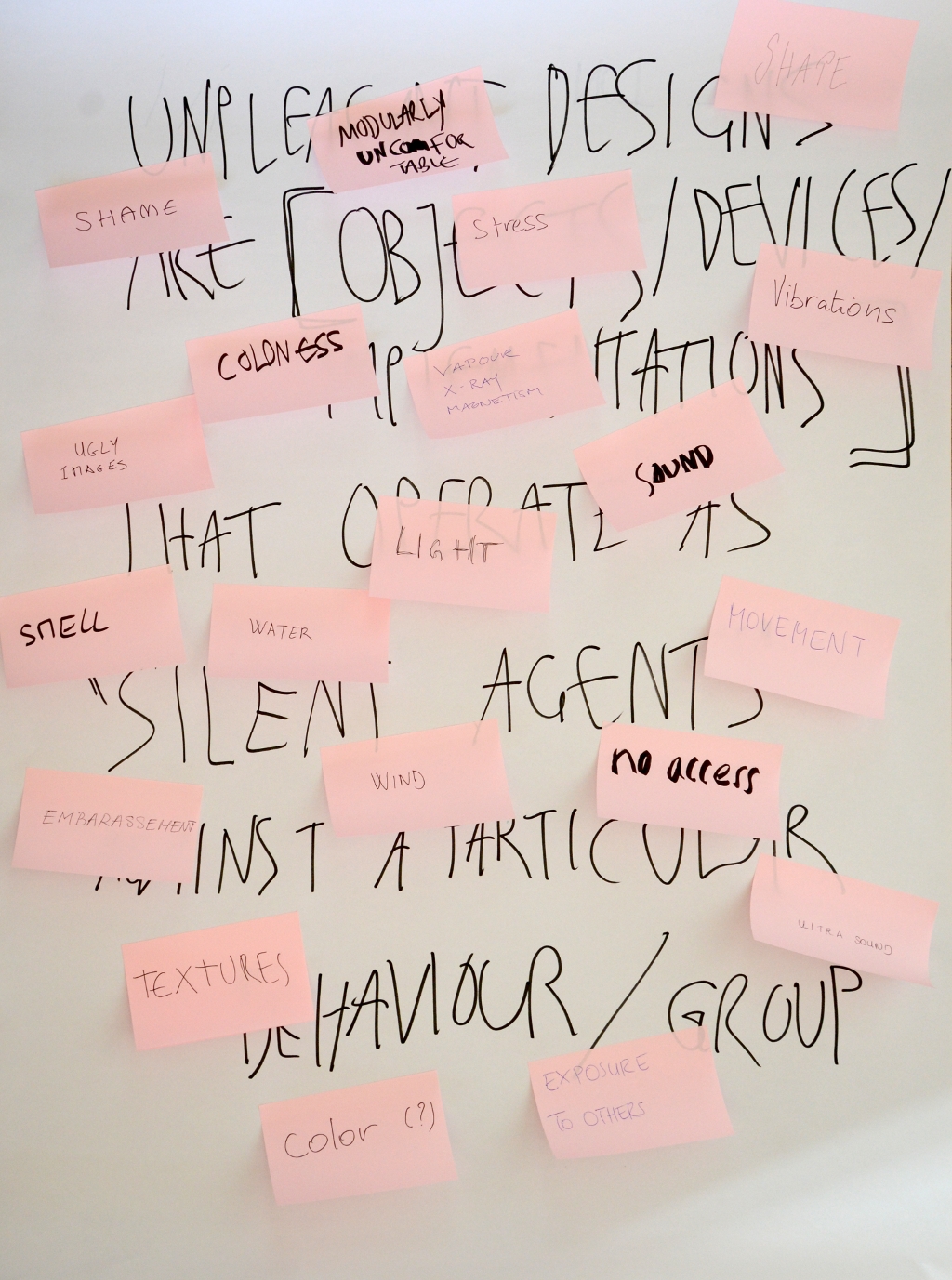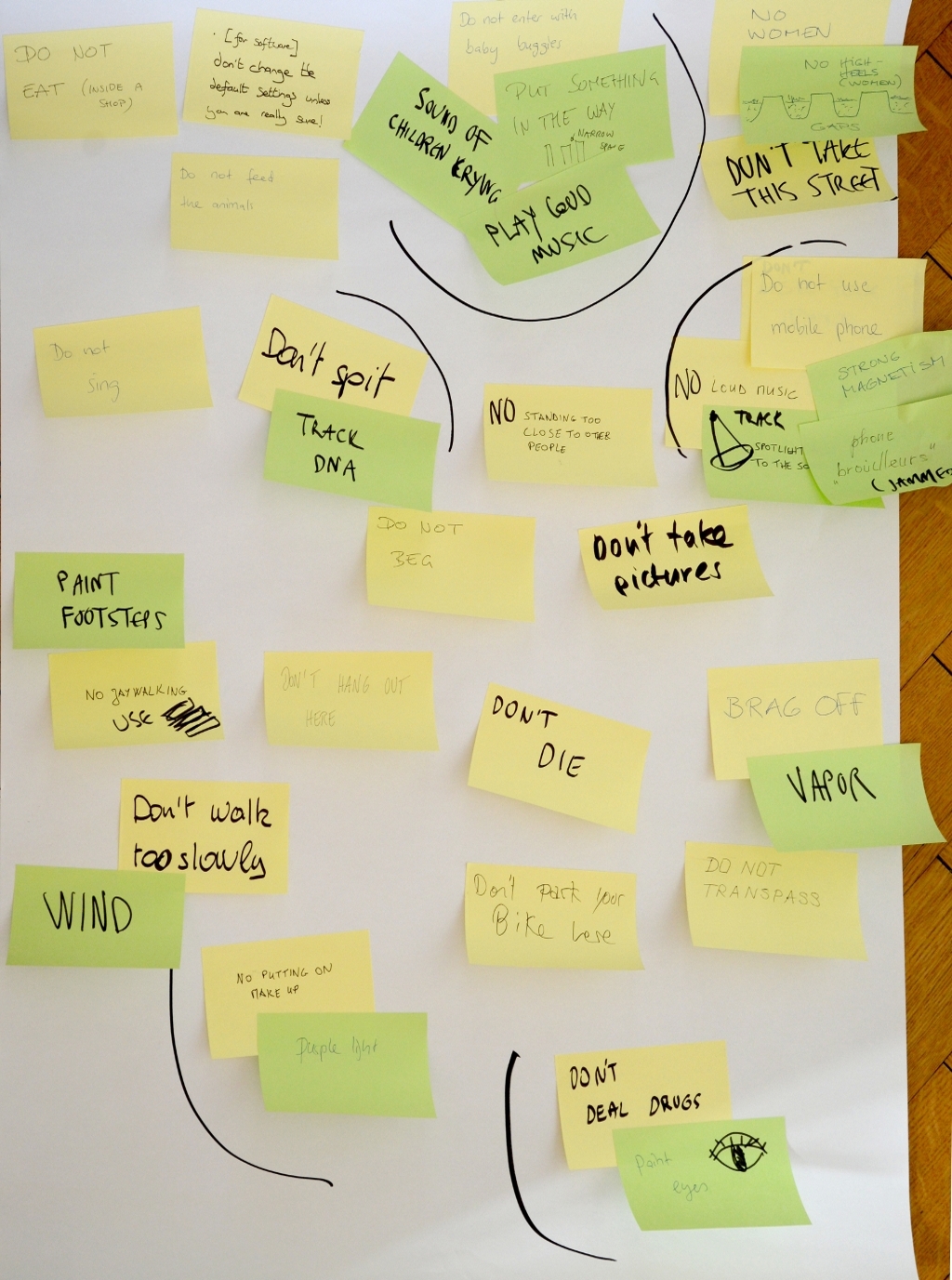Unpleasant Design Workshop @ liftconference13
We hosted a sprint-workshop at the Lift conference 13 in Geneva. Around ten participants joined the occasion to develop quick prototypes for unpleasant designs after we had brainstormed through various near-future scenarios.
We asked the participants to think about the “definition” of UNPLEASANT DESIGN, searching for techniques and tactics to be employed when designing “unpleasantness”. We then created a map of possible behaviours and/or social groups to discriminate against, out of which our protoypes were to emerge from. The following two sheets show the results of this thinking process.
Two largely unexplored topics (wind and vapor, traffic light programming) were discussed, among others that we weren’t aware of (using mirrors in fast-food chains to make you look ugly while eating; to name just few). Apparently, there are streets in Geneva which hinder the so-called “green-wave” of traffic lights during night hours to slow down traffic. Having discussed several other implementations which could be found in Geneva we split into two groups.
The “People Pusher” group discussed the possibilities of using vapor machines in public spaces to spread discomfort at certain heights; to prevent sleeping on the floor with wet vapor which doesn’t climb above 30cm from ground, for example. Their prototype for the people pusher was comprised of wind turbines which should (subtle or not) direct people’s movement into directions at certain points; slowing them down or speeding up, i. e. at the end of escalators to avoid people from gathering at critical congestion points.
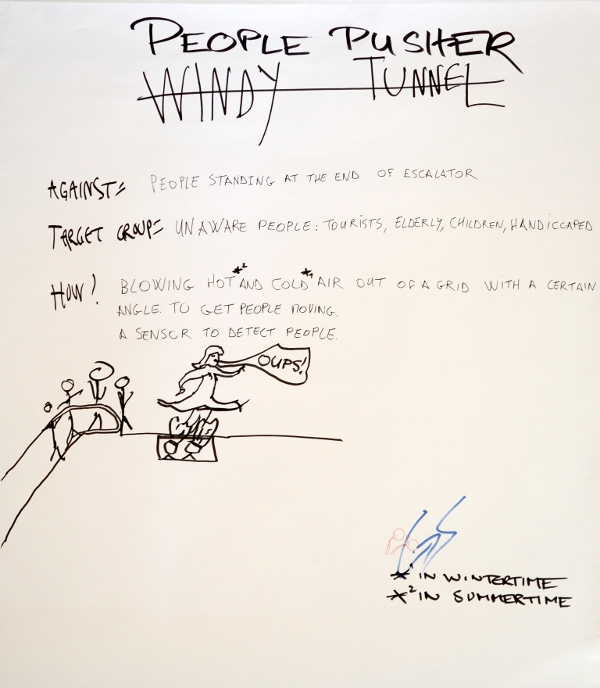
the ‘people pusher’ poster
The other group came up with the anti fence portable device, abbreviated as AFPD. Tiny fences along roads with a green middle lane prevent people from crossing the street at undesired points. However, their initial purpose as a divider has long gone. The initial case-study was a city in Russia but can be found in many cities worldwide. The portable device should help people to trespass the middle lane more playfully and with much more comfort.
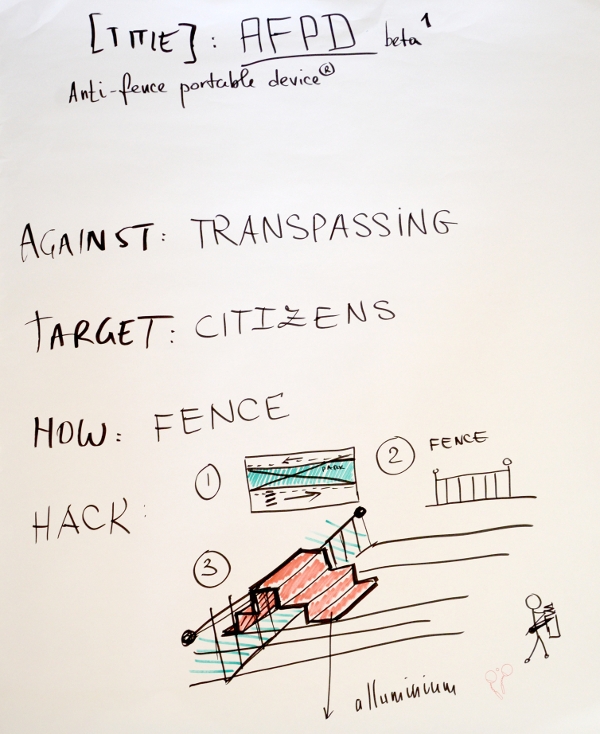
the ‘anti fence portable device’ poster
